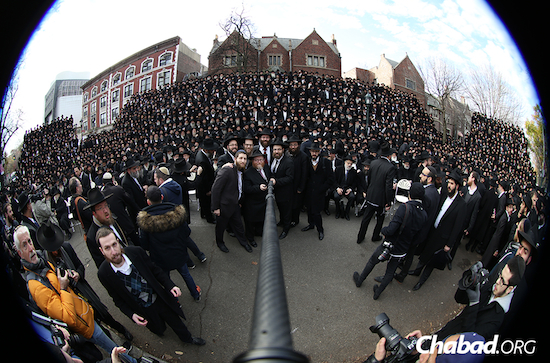At conference of hasidic emissaries, social media leads the way

Selfies. Hashtags. Live tweeting. Video streaming.
A recent gathering of worldwide Hasidic emissaries in Brooklyn demonstrated how the Chabad-Lubavitch sect, often at the vanguard of using the Internet for religious outreach, has continued to lead the way with its embrace of social media.
“Six years ago I sat hunched in a corner live tweeting this event alone, from a TREO 650,” said Morderchai Lightstone, who manages Chabad-Lubavitch’s social media feeds. “Now there is a veritable symphony of tweets. Amazing.”

Brooklyn Boro
View MoreNew York City’s most populous borough, Brooklyn, is home to nearly 2.6 million residents. If Brooklyn were an independent city it would be the fourth largest city in the United States. While Brooklyn has become the epitome of ‘cool and hip’ in recent years, for those that were born here, raised families here and improved communities over the years, Brooklyn has never been ‘uncool’.